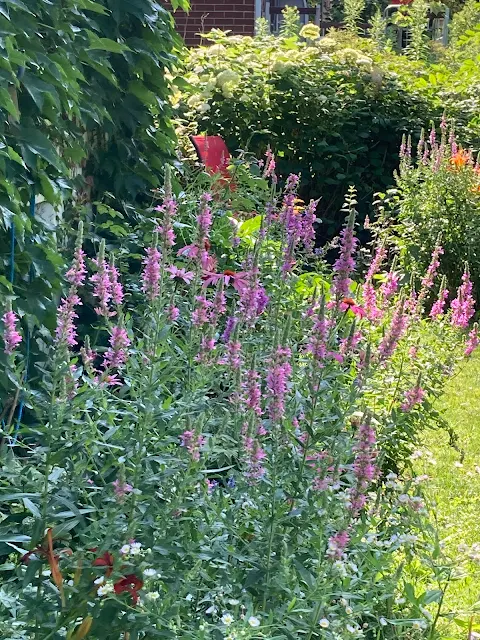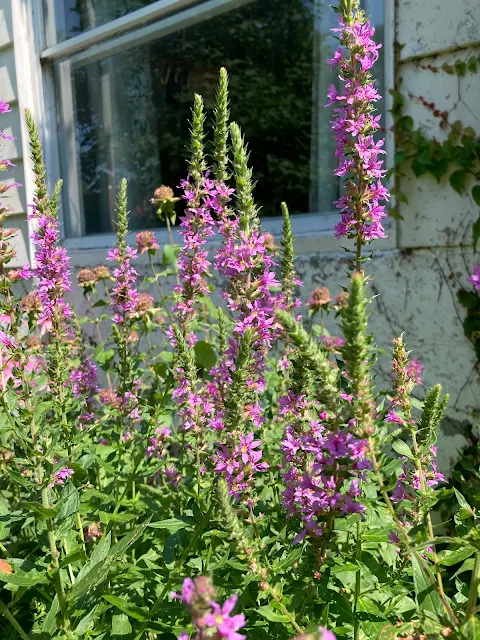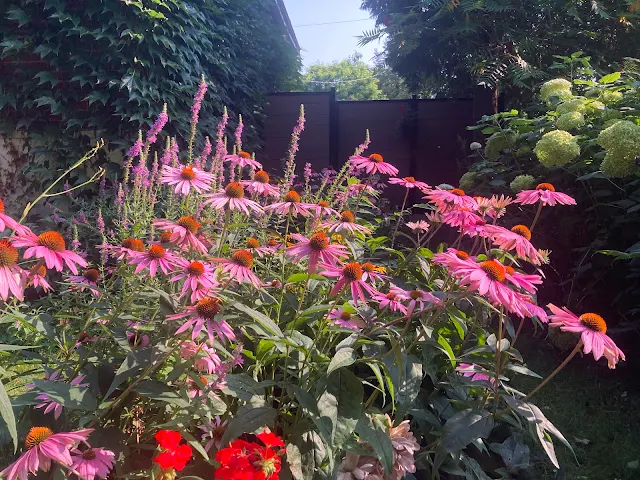Showing posts with label Cottage Gardens. Show all posts
Showing posts with label Cottage Gardens. Show all posts
Monday, July 21, 2025
Thursday, May 29, 2025
Chintz drapes, cottage gardens, and being at home
My friend, George Johnston, was a member of the William Morris Society of Canada, and one day he told me he was scheduled to address the Society on some aspect of William Morris's philosophy and art; it was Morris who raised the art and design of chintz to a new level of sophistication. Anyone interested in W.B. Yeats might enjoy reading The Yeats Sisters: A Biography of Susan and Elizabeth Yeats (1996) by Joan Hardwick. In addition to learning more about the sisters of probably the greatest poet of the Twentieth Century, Susan and Elizabeth Yeats made a living in London working for William Morris and his daughter, May Morris, but it was not a pleasant experience. When one thinks of chintz fabric, or of wallpaper, one thinks of Morris's designs. Chintz fits in with cottage gardens and cottages, the arts and crafts movement, and it is part of the ambience of cosiness, making one's home welcoming and warm, a place that is a sanctuary from the outside world, a place of refuge where one can think one’s own thoughts and let one’s imagination go where it will. There is a healing quality to this, healing that is found in an environment not far removed from nature, it is healing that is possible for our inner being.
Looking at the chintz drapes that I recently put up in a room in our home, I now see the psychic (as in “psyche”, the soul) quality of this fabric, the drapes seem to continue inside the room what exists only a few feet outside, they are a transition between the outside and the inside of one’s home. Chintz drapes embrace the outside world, they are an extension of the outside world, the garden, flowers, shrubs, and trees, the sky, clouds, rain, snow, and birds inhabiting the sky. There is a conservative repetition of certain patterns and motifs in these drapes, including flowers, vines, and greenery. Household furnishings—carpets, easy chairs, table lamps, bridge lamps, bookshelves, books, visual art on the walls, the colour of the walls, and drapes—all assume a oneness, and the garden is an extension of the rooms in one’s home to the natural world outside, the two becoming one. In order to discover what it means to be fully human, one’s environment needs to be a reflection of one’s inner being, and know that it can be a life lived sanely in an increasingly disturbed world. There is nothing modern about chintz or a cottage garden or being home, they breathe security and comfort.
Monday, July 29, 2024
Tuesday, June 25, 2024
Subscribe to:
Comments (Atom)






















































